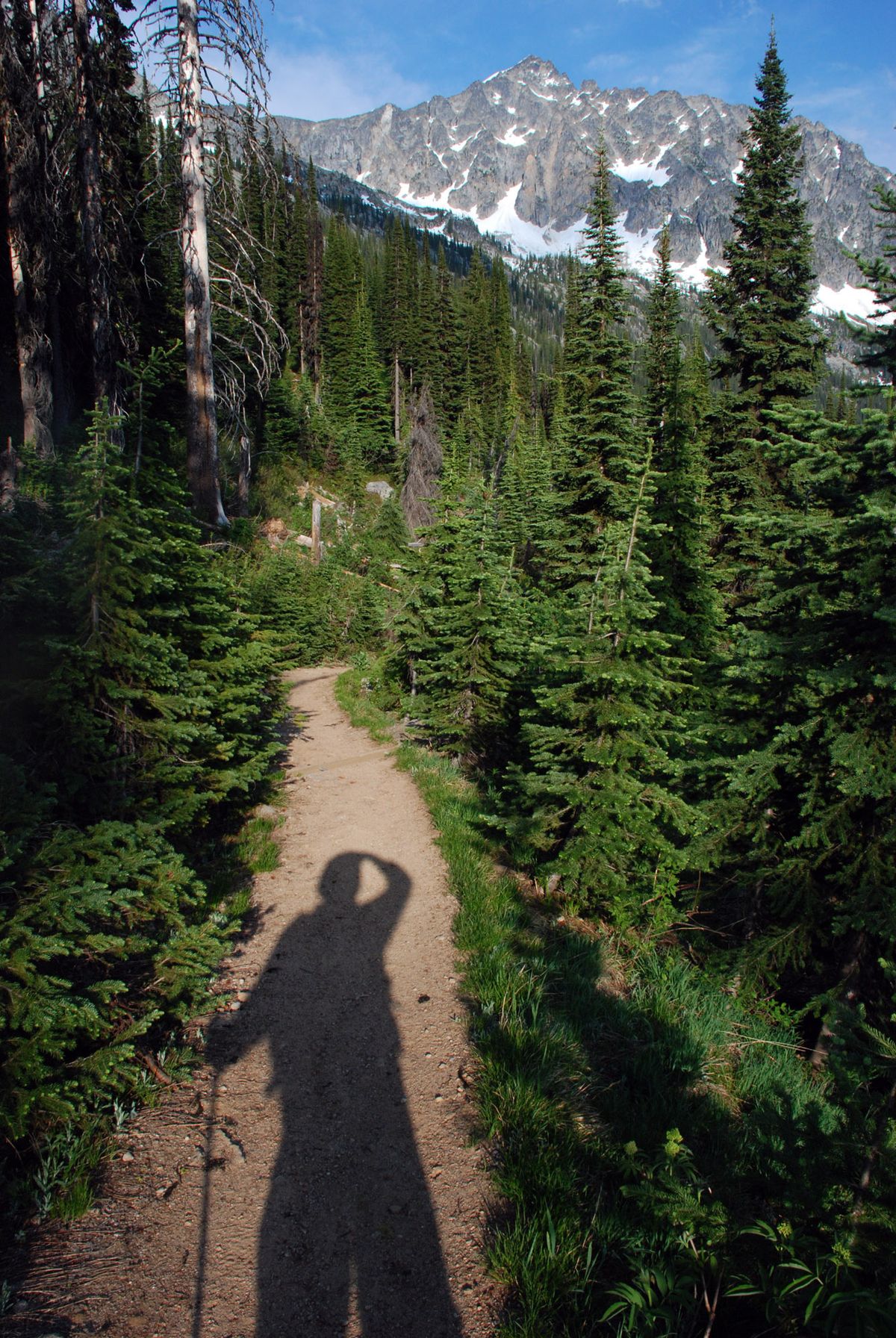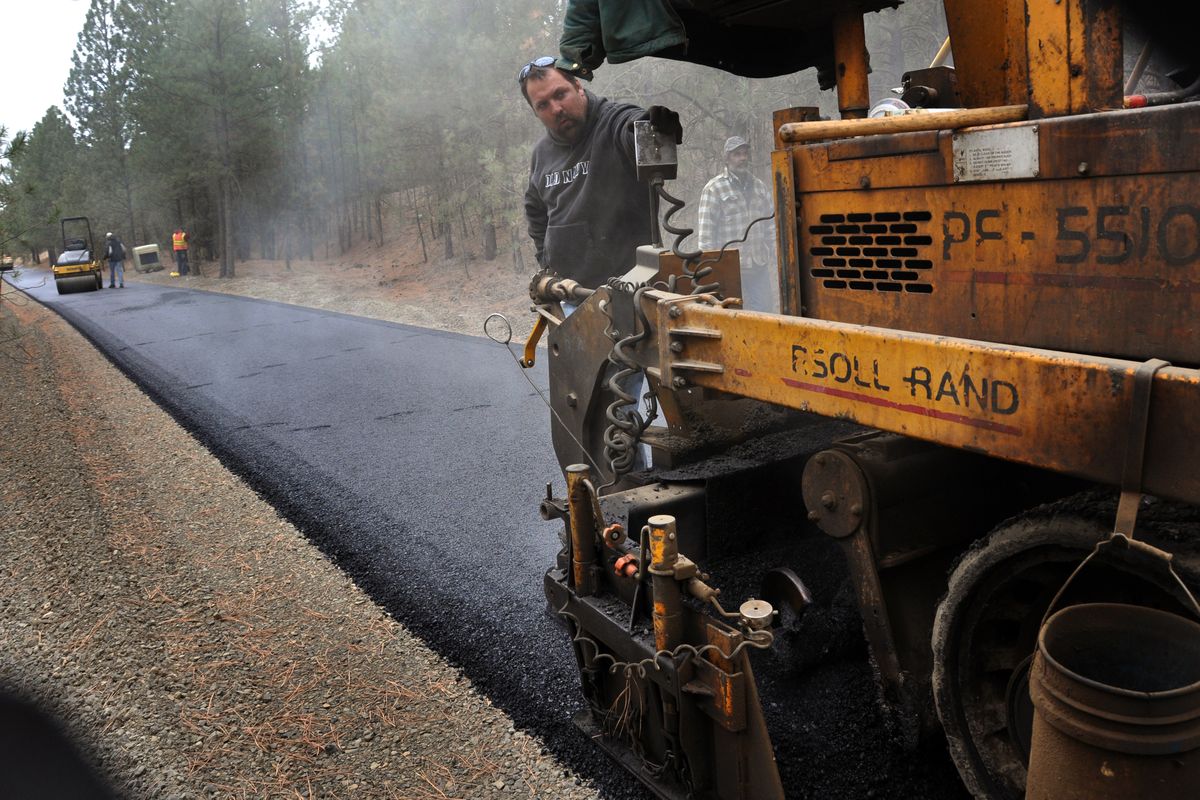Recovery Act funds give huge boost to outdoor recreation
Hundreds of miles of public land trails along with access roads and campgrounds were maintained or upgraded under contracts funded by federal “stimulus” legislation. (File photos)
Trails, campgrounds and forest access have been major stimulus beneficiaries from the American Recovery and Reinvestment Act of 2009.
Hikers were seeing something as rare as Sasquatch in the backcountry of national forests this summer – workers. By fall, hunters were finding trails cleared, bridges replaced and campgrounds expanded and repaved in locations scattered throughout the Inland Northwest
Millions of the $275 billion in stimulus funding to create jobs were earmarked for contracts or grants to repair, maintain and improve recreational infrastructure.
Paving and completion of the Fish Lake rail trail out of Spokane was among the first stimulus-boosted projects completed in the northwest because it was “shovel ready” when funds were approved in the spring of 2009.
The Spokane Regional Transportation Council Board awarded $778,317 to the project, or nearly 8 percent of the $10.4 million in federal stimulus allocated to Spokane County government agencies. The parking areas have been occupied by recreationists virtually every day since the trail was ready to use that winter.
This summer, a new wave of contracts was enacted in a work spree that will continue through next year.
Idaho Panhandle National Forests received about $18 million in stimulus funding for immediate use this season, said spokesman Jay Kirchner.
“This is money going into communities and putting people to work,” he said.
Funding was funneled to 21 road projects, five trails projects and the rest to a list of needy projects including silviculture.
One of the biggest projects refurbished the Kalispell Bay boat launch at Priest Lake.
The Laverne ATV Trail stream crossing was improved to reduce impacts to water quality.
Route of the Hiawatha rail-trail improvements and parking expansion will continue into next summer.
Each district received about $50,000 for trail projects, mostly contracted out to maintain or replace bridges.
“We used some of that money for leaders to run three youth crews to support our maintenance program,” said Pat Hart of the Bonners Ferry District. Hart said that the district was able to stretch the stimulus money by hiring the 15 youths with funds from other sources.
The Bonners Ferry District also used stimulus funding to paint its buildings, install new docks at Brush, Sinclair and Smith lakes and for replacing deteriorating bridges on the trails to Beehive and Roman Nose lakes.
“Those are huge things for us,” Hart said, noting that funding for infrastructure projects is routinely elusive.
Kirchner said the Recovery Act funding “allows us to get lot of work done that’s been sitting on the shelf waiting to get done for a long time while getting money back into the North Idaho economy.”
Hells Canyon and the Eagle Cap Wilderness enjoyed the most vigorous trail-maintenance campaign in more than a decade fueled by $1.6 million in stimulus funding to the Wallowa-Whitman National Forest.
Forest officials hired contractors to remove logs, roll away boulders and rejuvenate tread while enough money was in the pot to more than double the trail crews for the next two summers, said Dan Ermovick, the forest’s recreation manager.
Colville National Forest officials hired local contractors with stimulus funds to resurface two miles of Sullivan Creek Road.
Umatilla National Forest received $3 million for trail maintenance and $1.7 million for facility improvements, said spokeswoman Joanie Bosworth.
Campgrounds were upgraded and 30 toilets across the forest were replaced with new accessible vault toilets.
The Pomeroy District partnered with several youth conservation organizations for trail maintenance, much of it in the Wenaha-Tucannon Wilderness.
Clearwater National Forest North Fork District officials received about $4 million for trails alone.
“That’s a large multiple of the annual trail budget we normally receive,” said Doug Gober, district ranger. “We’re doing everything from tread repairs to water bars and replacing structures and brushing, most of that work being contracted out.
“We’re making tremendous improvement in backlogged maintenance,” he said, noting the district has about 700 miles of trails.
Forest visitors planning outings to the Umatilla and Clearwater forests this summer were warned to check the status of their favorite destination before heading to the woods.
The Clearwater alone awarded $21.5 million in contracts, said Supervisor Rick Brazell. In a news release issued in June, he warned that “People will find situations ranging from inconveniences such as construction noise, to delays, to outright closures.”
Weitas Butte, Curvy and Eagle Point fire lookouts were repaired. Culverts were replaced on the Pierce-Superior Road 250, important to a wide range of forest recreation as well as logging.
Grading and ditch-cleaning crews were tending roads that have been ignored for years.
“In addition to accomplishing critical infrastructure and restoration work, these projects will provide a number of local employment opportunities,” Brazell said.
Mount St. Helens received much of the Gifford Pinchot National Forest’s $627,000 in federal economic stimulus money dedicated for trail work. The 30-mile Loowit Trail that circumnavigates the volcano – a popular route badly damaged by storms in 2006 – received a big reconstruction boost.
The Forest Service wasn’t the only federal recreation provider boosted by the stimulus.
The U.S. Army Corps of Engineers, for example, earmarked nearly $2 million from the Recovery Act to upgrading the Riley Creek Recreation Area, a popular North Idaho campground on the Pend Oreille River near Albeni Falls Dam.
Many of the upgrades were originally planned in 2001, but had been sitting on the back burner ever since, said Craig Brengle, Albeni Falls Dam natural resources manager.

